1. NUTRITION & FEEDING
Feed Quantity & Quality:
Planning Nutrition is knowing how much to feed your cows. They consume more nutrients than they produce as milk.
When planning feed consumption, the industry standard is to measure food based on the feed’s dry matter content (i.e.: how much it weighs when all the water is extracted)
- Non-pregnant adult cows: 2% of bodyweight
- Pregnant, non-lactating cows: 2% of bodyweight
- Milking cows: 3% to 4% of bodyweight
It is essential that cows have constant access to high-quality feed and clean water.
Ensure that fresh forage is always available with plenty of space to access them to avoid adult cows do not hurt or deprive the young stock.
It is good to feed forage first and then supplement with nutritional concentrates. It is recommended to feed 1 kilogram of concentrate for every 2 kilograms of milk that a cow produces.
Feed Composition:
Dairy cows extract water, energy, protein, fibre, vitamins and minerals from their feed.
Nutrients that are essential for milk production include:
- Water
- Energy
- Protein
- Fibre
- Vitamins
- Minerals
Feed sources: Forage and Silage
Grass is your cheapest and highest-quality of forage. You have to make sure your pastures are maintained in a young vegetative state and ensure regular fertilization, irrigation, and grazing rotation.
During some seasons you do supplement pastures with hay or silage. Other staple forages also include maize, barley, and legumes.
dairy-management-principles-pasture-quality-curve | The choice of forage is region specific and season specific. You must also add concentrate and protein supplements like soybean or canola meal, rice bran, or citrus pulp.
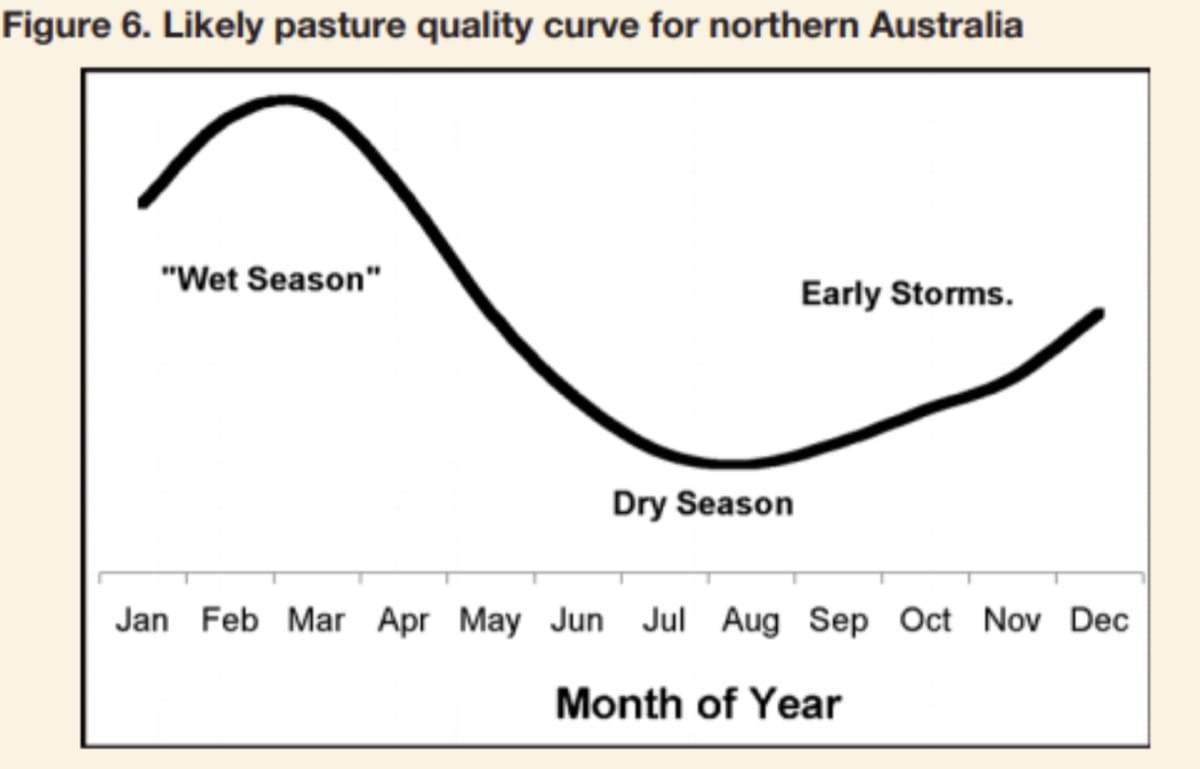
Surplus Forage on the farm in converted to Silage. Ensilation is an anaerobic fermentation process which converts plant sugars to organic acids, preserving the forage for long periods.
This forage fermentation is aided by its moisture and sugar content, bacteria (natural and supplemented), exclusion of air and the forage is wilted to 30% dry matter and added with silage additives if the dry matter is below 30%.
You can feed silage in combination with concentrates to balance out the seasonality and increase productivity.
Storage:
Good storage conditions for the feed are important to avoid spoilage, wastage and retain quality.
Your store facility should to take cognizance of the moisture content and other weather conditions to prevent toxins and moldy feed from occurring.
Feeding Management:
The Five main feeding systems in use by Australian dairy farmers
LOW BAIL
Grazed pasture + other forages + up to 1 tonne grain or concentrate in the bail
MODERATE-HIGH BAIL
Grazed pasture + other forages + >1 tonne grain or concentrate in the bail
PMR
Grazed pasture for most or all of the year + Partial Mixed Ration on feed pad and /or grain or concentrate in the bail
HYBRID
Grazed pasture for less than 9 months per year + Partial Mixed Ration on feed pad and /or grain or concentrate in the bail
TMR
Zero grazing. Cows housed and fed only Mixed Ration

2. REPRODUCTION & YOUNG STOCK
Reproduction:
The Reproduction Performance is influenced by:
- Heat detection
- Artificial insemination technique or bull management
- Nutrition
- Environmental conditions
- Growth of replacement heifers
Your dairy farm should have:
- A reproduction plan
- Transition period plan
- Routine medical examination to check which cows:
- are pregnant
- can be bred
- have uterine, ovarian or another disease
- Keep full and up-to-date records
- Reduce the risk of introducing reproductive diseases through strict biosecurity
Cows in Heat:
Signs that a cow is in heat:
- Standing to be mounted
- Mucus discharge and restlessness (detected by activity monitor)
Using pedometers on cows eligible for heat can lead to a higher rate of heat detection and more efficient breeding. Aids like CCTV cameras and Heat Patches can be deployed.
Calf Health:
Most importantly, please ensure that your calves consume about four liters of colostrum within the first 12 hours of birth.
This gives it a jump start in terms of both nutrition and building anti-bodies.
In addition to this, here are a few points to note:
- The rumen of the calves are not fully developed until two months and cannot digest solid feed. Ensure they consume 15% of their body weight in milk every day.
- Concentrates and high-quality hay can be introduced from the first week to aid rumen development and prepare them to be weaned.
- New born calves should be placed in a clean and dry pen and can be transferred after a few weeks to individual pens or grouped by age and size.
- Keep them away from manure which has pathogens that cause scours, the most common calf disease.
- Clean all feeding equipment.
- Staff should wash hands between handling calves and adult cows.
- Calves that will not suckle colostrum from a bottle can be tube-fed.
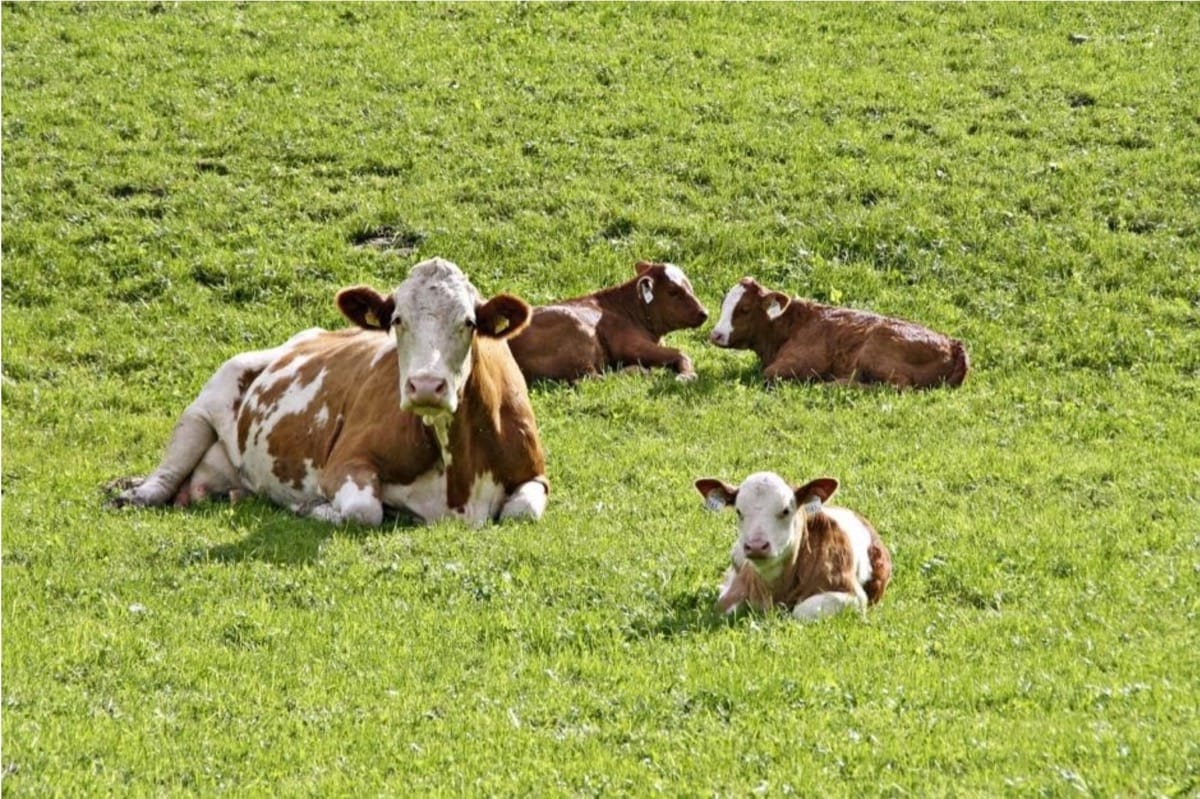
3. MILK HARVESTING
Milk harvesting being a fine blend of cows, people and equipment, you have to follow the below key aspects:
- Design the milking parlor for cow comfort and safety.
- Milkers should evoke a positive response from the cows by their manner of approach. The cows should be kept relaxed and comfortable during milking.
- All milking equipment should be placed to a clean, dry teat and teats cleaned with an antiseptic after milking.
- Milking machines have to be regularly tested and sterilized.
- Milk needs to be placed or transported right after milking to refrigeration/ chilling units.
- Feed: cows like to feed between 5 and 9 am and again between 5 and 7 pm. Milking should be done 6 am and 6 pm. Cows like to eat and drink following milking.
Good Cleaning Practice:

- Water: quality – how dirty is the water?
- Action: mechanical or manual cleaning action
- Time: the right time duration for the cleaner chemical to work
- Chemicals: wearing protective gear, use the right chemical in the recommended dilution
- Heat: correct amount of heat to be applied or else the or else the sanitisers could become denatured and ineffective
4. COW COMFORT
The National Dairy Industry Animal Welfare Strategy recognizes five guiding principles to achieve good welfare outcomes for dairy animals.
- Freedom from hunger and thirst by ready access to fresh water and a diet to maintain full health and vigor.
- Freedom from discomfort by providing an appropriate environment including shelter and a comfortable resting area.
- Freedom from pain, injury and disease by prevention or rapid diagnosis and treatment.
- Freedom to express normal behavior by providing sufficient space, proper facilities and company of their own kind.
- Freedom from fear and distress by ensuring conditions and treatment which avoid mental suffering.
Principles of Cow Comfort:
Pasture grazing your dairy cows can offer many economic, environmental, animal welfare and social benefits.
In addition to this, the comfort of the cow can be significantly improved by providing:
- Clean and dry bedding
- Ventilated and clean shed to lie down/ rest
- Shade from the heat
- Non-slippery flooring
This improved comfort and well-being will result in more healthy and productive animals.
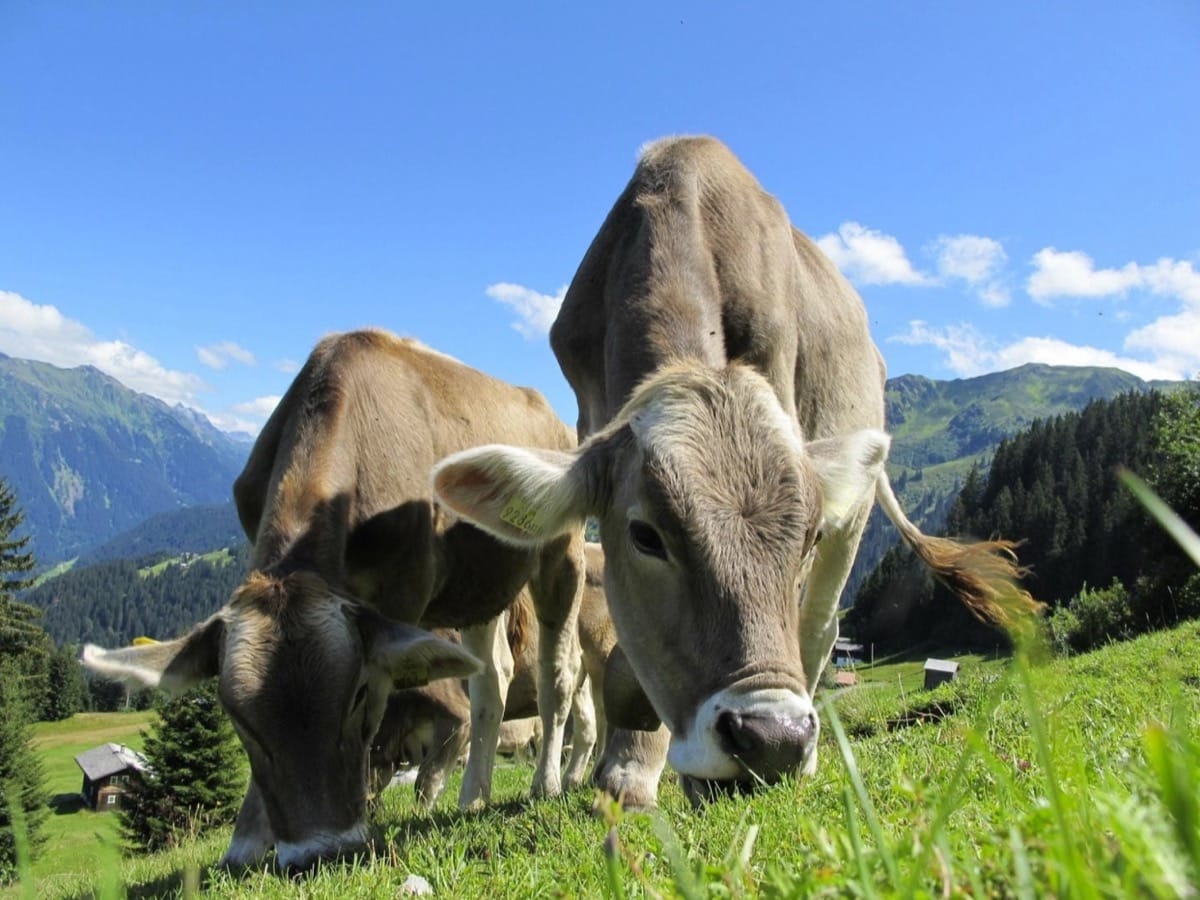
Shed Design:
The dairy barn design is dependent on the regional weather. Areas of focus while building a shed are:
- Ventilation
- Space for cows to move (forward and sideways)
- Non Slip floors
- Feeding area
- Effluent management
- Clean water and feed
Compost barns are comfortable and cost-efficient.
Free-stall barns: have individual cubicles along sides and have an open space in the middle and is expensive to build.
The sheds have to facilitate easier feeding and to separate manure from bedding.
Veterinarian Care:
Veterinarians on call will be essential for periodical checks and other medical care of the herd.
5. HEAT STRESS
FACT: HEAT STRESSED COWS EAT LESS, PRODUCE LESS MILK, AND ARE MORE DIFFICULT TO GET PREGNANT
An environmental temperature between 8 and 24°C is ideal for most cows. During hot months, humidity control is important. Cows cannot dissipate heat very well, it is mostly done through breathing.
Sources of heat:
- Environment
- Fermentation of rumen
- Body heat transferred from other cows
Signs of heat stress:
Mild symptoms of heat stress include loss of appetite and a constant shade seeking behaviour.
However, if you’re not careful, this can quickly escalate into more serious symptoms such as rumen not contracting, excessive drooling or even collapse.
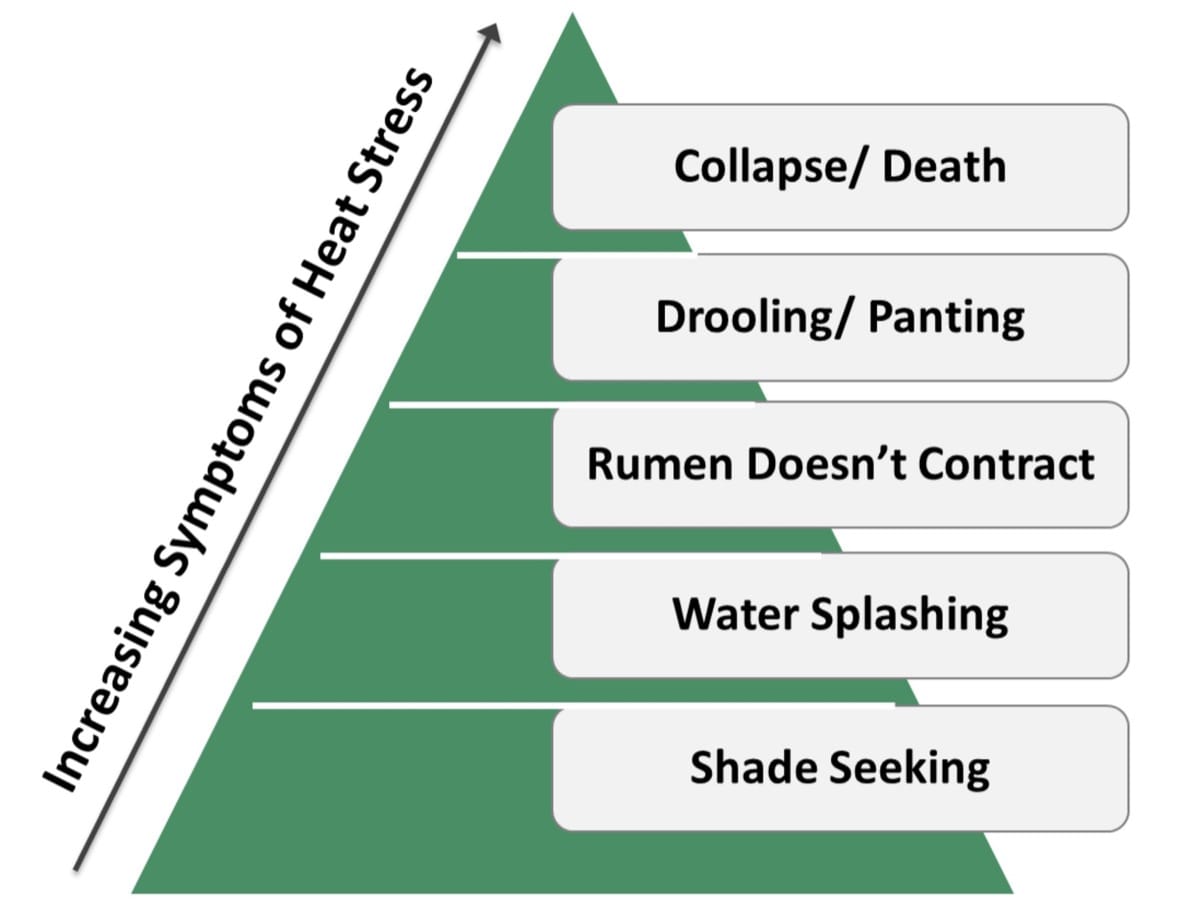
Cooling Strategies:
Did you know that you could increase milk yields by up to 3–5kg/day just through effective cooling strategies?
That’s why it is important to incorporate cooling and ventilation plans for your animals.
Here are a few tips for you to consider:
Long-term Design Interventions
- Ventilation on the highest parts of your shed roof
- A north-south orientation to minimize heating from sun travel path (east-west)
- A steep roof slope to allow for greater escape of hot air and to allow air flow
- Ensure that large trees or other structures don’t block cool breezes
- Located on the highest ground possible, to allow good drainage and air flow
- Trees to be planted on the western side of the shed to reduce hot afternoon sun
Quick-fix Manual Interventions
- Heat-stressed cattle can be cooled by applying water to the head and back to run down their sides.
- Sprinklers placed above feed bunks to wet the neck and back
- Cooling fans or permanent ceiling fans
- Shade cloth to be used where necessary
- Feeding: Hot cows eat less since the rumen generates heat while fermenting the feed
COWS CAN GO FROM MILD HEAT STRESS SYMPTOMS TO MORE SEVERE HEAT STRESS IMPACTS VERY QUICKLY, ANYWHERE BETWEEN 30 MINUTES TO A FEW HOURS. SO IT’S IMPORTANT TO TAKE IMMEDIATE ACTION ONCE HEAT STRESS IS DETECTED.
6. ANIMAL WELFARE
Sick cows need:
Mastitis, a common, contagious and costly disease
Lameness, the second most costly disease
Metabolic disorders that may occur due to energy and calcium imbalances.
And ruminal acidosis that occurs mostly during early lactation.
- Sheds with non-slippery floors and adequate bedding and access to shade, water, feed (forage is preferred over mixed ration).
- Good treatment happens for sick cows when you ensure there are facilities available to manage them.
- Cow diseases such as:
- Treated with antibiotics during lactation or antimicrobial therapy during dry periods
- Control strategies include biosecurity, milking procedure, milking equipment , teat dip, culling chronically infected cows.
- Environmental mastitis can be controlled by minimizing the exposure of the teat end to mud and manure with use of a pre-milking teat dip.
- Caused dues to excessive time standing on concrete, rough surfaces, poor bedding, excess moisture, poor foot care, slippery floors and poor nutrition.
- 80% of lameness have foot lesions, and 80% of foot lesions occur in the back feet.
- Treatment involves paring out the lesion and relieving weight bearing on the affected claw

7. TECHNOLOGY APPLICATIONS
We’ve already seen how technology can help you improve farm performance. For example, they can help you:
- Get accurate and automatic pasture growth measurements
- Analyze milk production and fertility or health of your cows
- Assess the comfort levels and welfare of your cows
- Coordinate better with staff, veterinarians and farm advisors
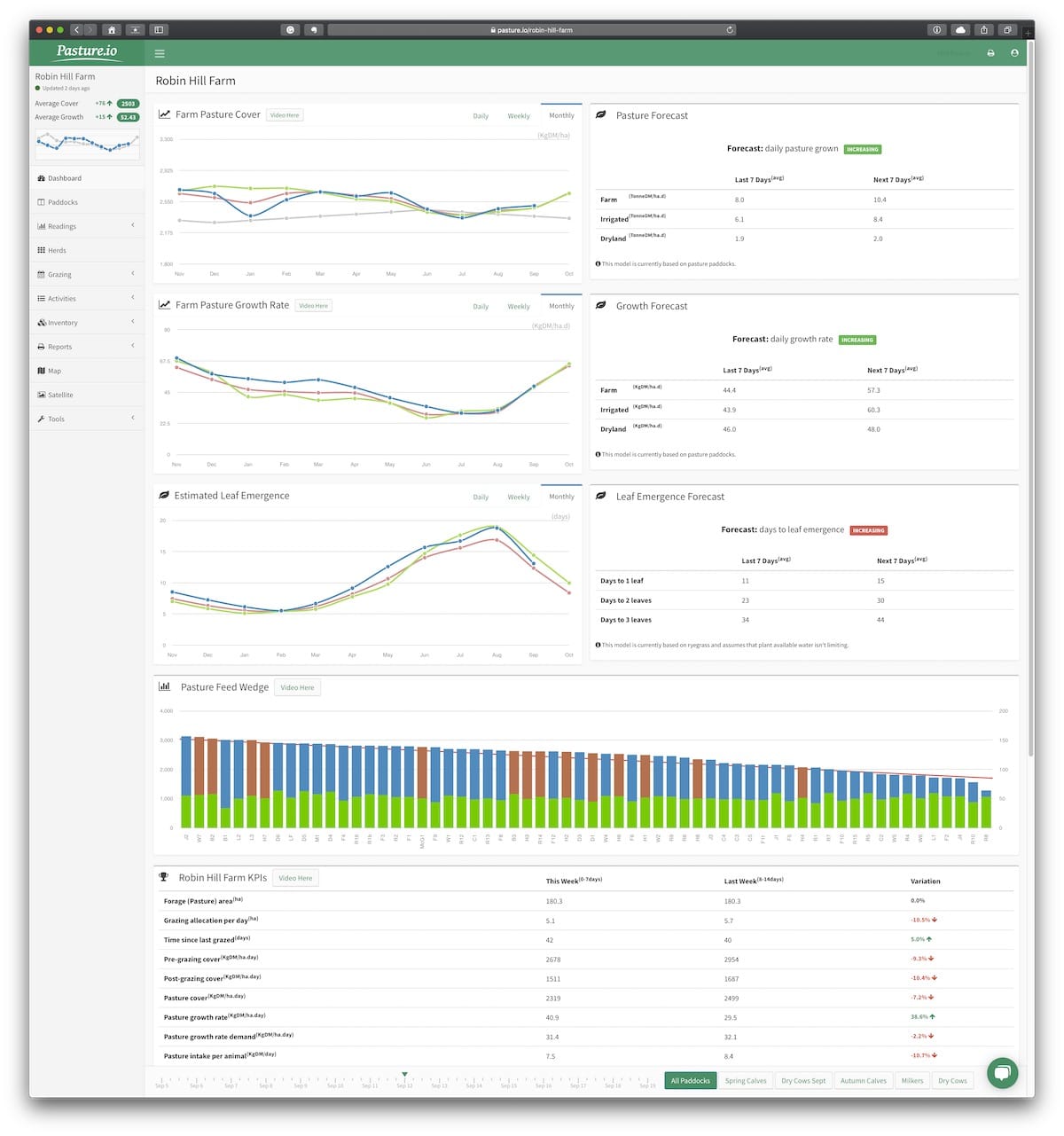
How does the technology work?
Each technology application will have its own set of components and frameworks.
However, in general most arm technology applications will involve at least a few of the following:
- Sensors: To detect changes in your farm or farm animals. Sensors can be as costly as a satellite or as cheap as a simple RFID sensor.
- Network: To be able to transmit and receive data, to allow for remote access
- Data Management: To be able to store, process and analyze the raw data
- AI/ ML Algorithms: To analyze raw data, see patterns and offer effective solutions/ suggestions
- Farmer User Interface: Computer/ phone for farmer to access end results and make changes
- Software: That ties all these above pieces together into a seamless unit
As a dairy farmer, you have to view your herd from these seven principles, develop your strategies, manage production and evaluate outcomes relative to each one of them, to be able to build a strong and balanced business towards sustainability and profitability.
That brings us to the end of this article. We trust that it was useful.
Do check out our blog for more informative articles and videos. Until we meet again,
Happy Farming!
- The Dedicated Team of Pasture.io, 2020-09-02